Another blogger raised questions about Ritz-Carlton Yacht Collection’s “struggles” and trouble with the brand, and market. Here is my response as a luxury travel agency owner specializing in this market.
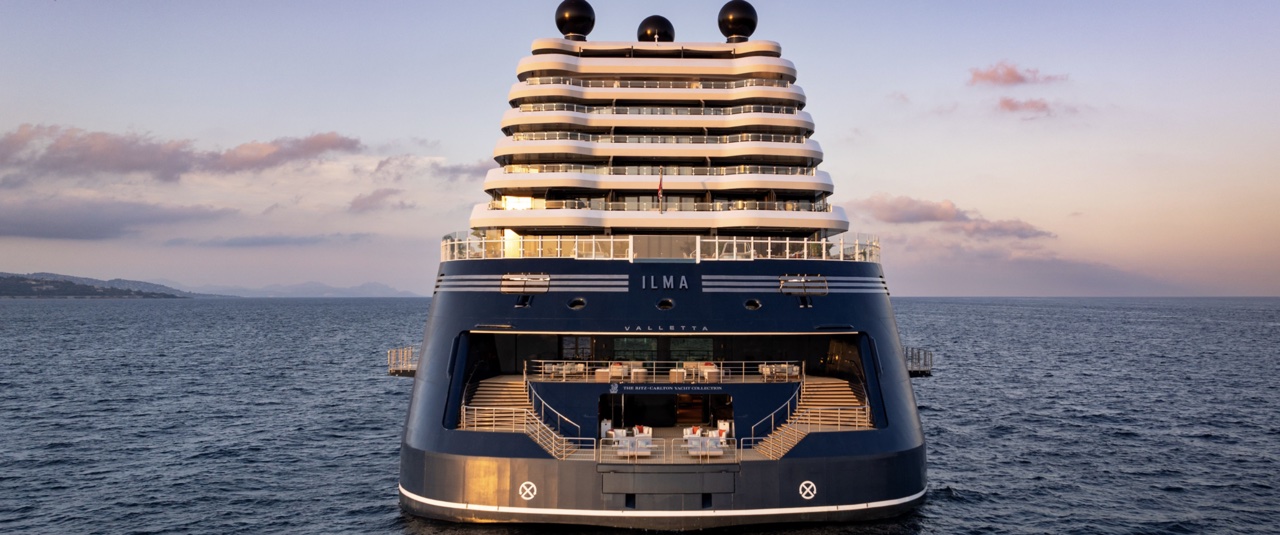
Ritz-Carlton Yacht Collection Financial “Struggles”
Details were released this week of the financial “struggles” of the 55% owner of Ritz-Carlton Yacht Collection, Oaktree, a private equity firm. Much like hotels are marketed as Ritz-Carlton or other brands, Marriott doesn’t own the ships but acts as a branding and marketing agent.
“The company says it requires around $440 million from its shareholders, $312 million of which needs to be delivered before the end of June next year. This is on top of the $63 million that they have already pumped into the business this year and around $630 million injected at the end of 2024.
On the June call, the company’s management team said that in a bid to boost growth they were spending more on marketing. Investment in marketing roughly tripled between the first quarters of 2024 and 2025. And revenues are growing, up two thirds over the same period.
Nonetheless, the company had estimated when it issued the bond that occupancy levels would be around 85% to 90% by 2026. But with occupancy at 50% during the first quarter of this year, those “mature” occupancy levels are unlikely to be reached until 2028 or 2029, according to a report by Pareto Securities.” – Bloomberg
Of note, Patrick Mitchell joined the brand two weeks ago as SVP Global Sales following the May 2025 departure of Kristian Anderson. Mitchell has experience in both the resort sector (Club Med), and cruise space (Norwegian, Royal Caribbean.) A fresh perspective in the sales office along with this revision to profitability projections could change the approach going forward.
Claims Made, Questions Asked By Fellow Blogger
Lucky at One Mile At A Time was fairly open that he’s not particularly well versed in the cruise space. While I don’t write about it as often for this market, my travel agency is a significant player in the luxury and expedition cruise space and I write a column for an industry publication.
“Ritz-Carlton Yacht Collection cruises are pricey, so what’s causing the profitability issue? The problem seems to be occupancy.” – One Mile At A Time (OMAAT)
Well, yes.
“The ultra luxury cruise lines are largely targeted at an older crowd, who enjoy the cruising lifestyle, have the money to pay for it, and are incredibly brand loyal” – OMAAT
This statement is dubious. Some luxury cruise lines have made their bread and butter in the past from older clients with resources (time and money) to enjoy their product, but that is changing and many are not as brand loyal as airline customers who will route themselves out of the way for their preferred airline for years.
“I think the question is, how big is the market of people who are willing to pay top dollar for a luxury cruise, outside of those typical demographics? In the cases of these hotel-branded ventures, it seems like they’re almost positioning themselves as cruise lines for people who wouldn’t typically cruise.” – OMAAT
Let me affirm this one but with caveats. High net worth travelers are always looking for something new – but within their comfort level. The market is surprisingly vast. The US is the most cruised market in the world and yet just 15% of the US has ever been on a cruise of any kind, just 7% in the last three years. That means that 85% of travelers have never embarked on a cruise of any kind and of those that have tried a product in this market, it’s incredibly narrow. US hotels are on pace to account for $665+ billion this year compared to an all-time high of $25 billion in the cruise market. An insignificant $1bn slice of the hotel market would be a sea change if transferred to the luxury cruise market.
But that’s because this market didn’t largely exist even three years ago. Luxury cruises have been around for a long time, but this is a new experience focused more on a casual luxury than caviar service. It focuses on ports premium travelers want to visit, and this is a new concept in the market. These are resorts at sea, not cruises per se.
Resort travelers will find a familiar experience but in a very different light and that makes the market incredibly large.
“I think these cruise lines are largely targeted at affluent families, and that’s a tricky demographic if you’re aiming for 85-90% occupancy, since most people aren’t going to take their kids out of school for a cruise.” – OMAAT
Where he’s right is that a target of 85-90% occupancy is insanity, but not just for the cruise market. High end hotels with huge presidential suites leave them unoccupied most of the year. It exists solely for ultra high net worth individuals and companies where they can exact enormous rates.
Most luxury hotels don’t target this kind of occupancy, it’s simply too hard to have the right inventory on the right dates for all travelers. Luxury hotels averaged all-time-high rates of 78% occupancy, but boutiques sit at 62%. This is a boutique luxury product and more complicated because guests can book a one night stay in a hotel to bring up occupancy, but if there was a statistic (I couldn’t find one) where it ranked occupancy solely on seven consecutive night trips, these numbers would fall through the floor. When a ship leaves port with an empty suite, it can’t fill it intermittently, a hotel can.
“… on the high end, travel is more about “scene” than ever before, and no matter how well a cruise line is branded, I don’t think many people are willing to replace their annual “see and be seen” pilgrimage to Saint-Tropez, Mykonos, Ibiza, etc., with a cruise” – OMAAT
This is partially true, however, those who are spending a week in St. Tropez are likely above the Ritz-Carlton Yacht Collection market anyway. Those who sit below that strata might relish an opportunity to sample those destinations. And, of course, it’s not really a “cruise” in the Royal Caribbean sense of the term.
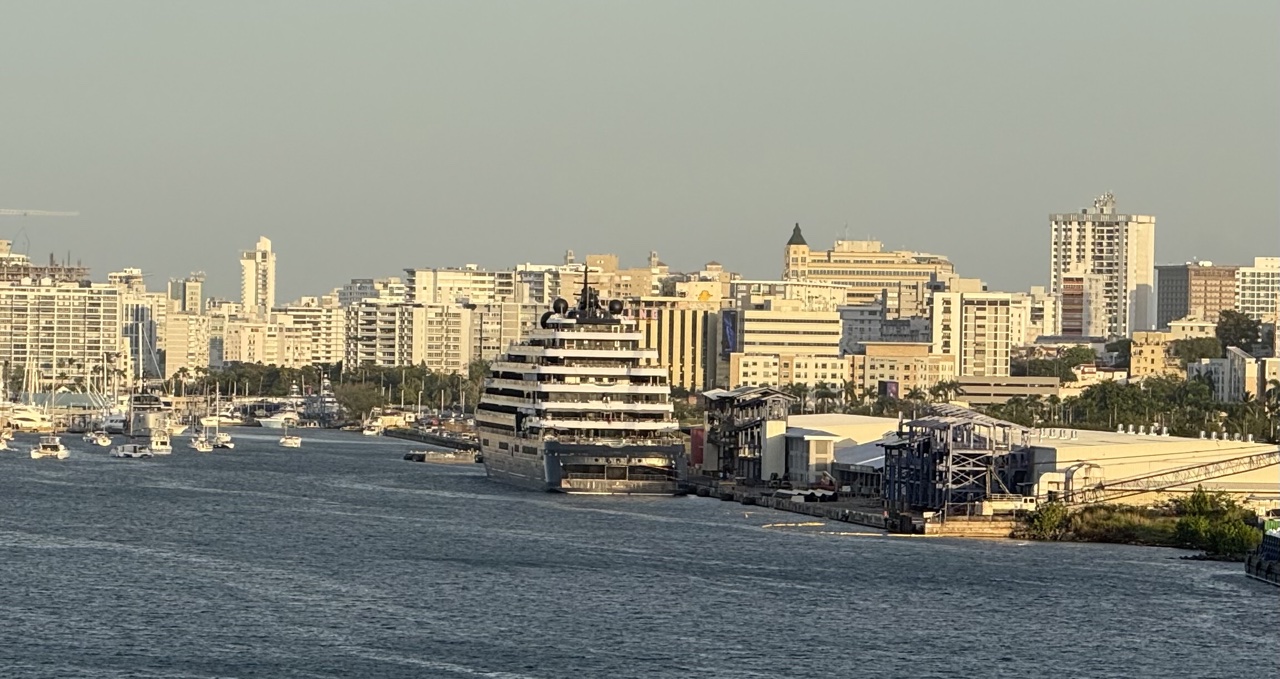
Ritz-Carlton Yacht Collection And The Future Of The “Resort At Sea”
Several high end hotel chains are bringing similar products to market with a variety of models. In 2026, Four Seasons Resorts will launch its partner vessel, Four Seasons Yacht I, with a completely different model – charging by the room rather than by the passenger with no food or drinks included. This will be yet another distinguishing feature and demonstrates its desire to replicate the hotel experience at sea.
Ultra-luxury Aman will launch Aman at Sea in 2027 with its first yacht, the Amangati. There’s no official word on pricing and structure at this point.
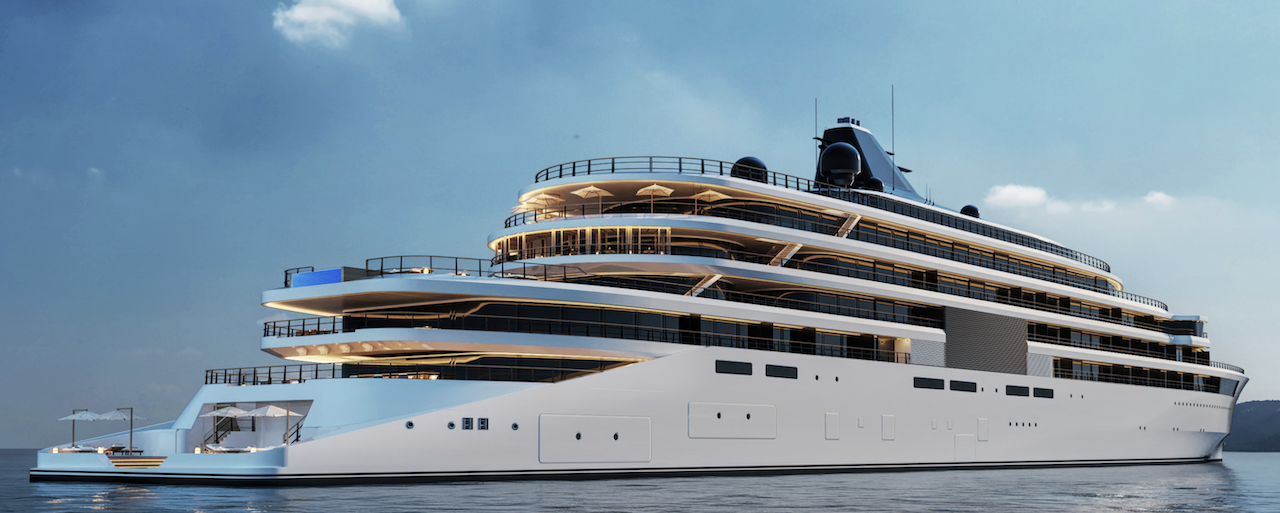
Accor-owned Orient Express train line which has also reinvented itself over the last few years is launching a completely different type of ship. It’s eco-focused and more efficient when using its solar equipped sails. Orient Express Sailing Yachts will launch in the Mediterranean, Caribbean, and Adriatic seas in 2026 with the Corinthian, adding a second ship in 2027.
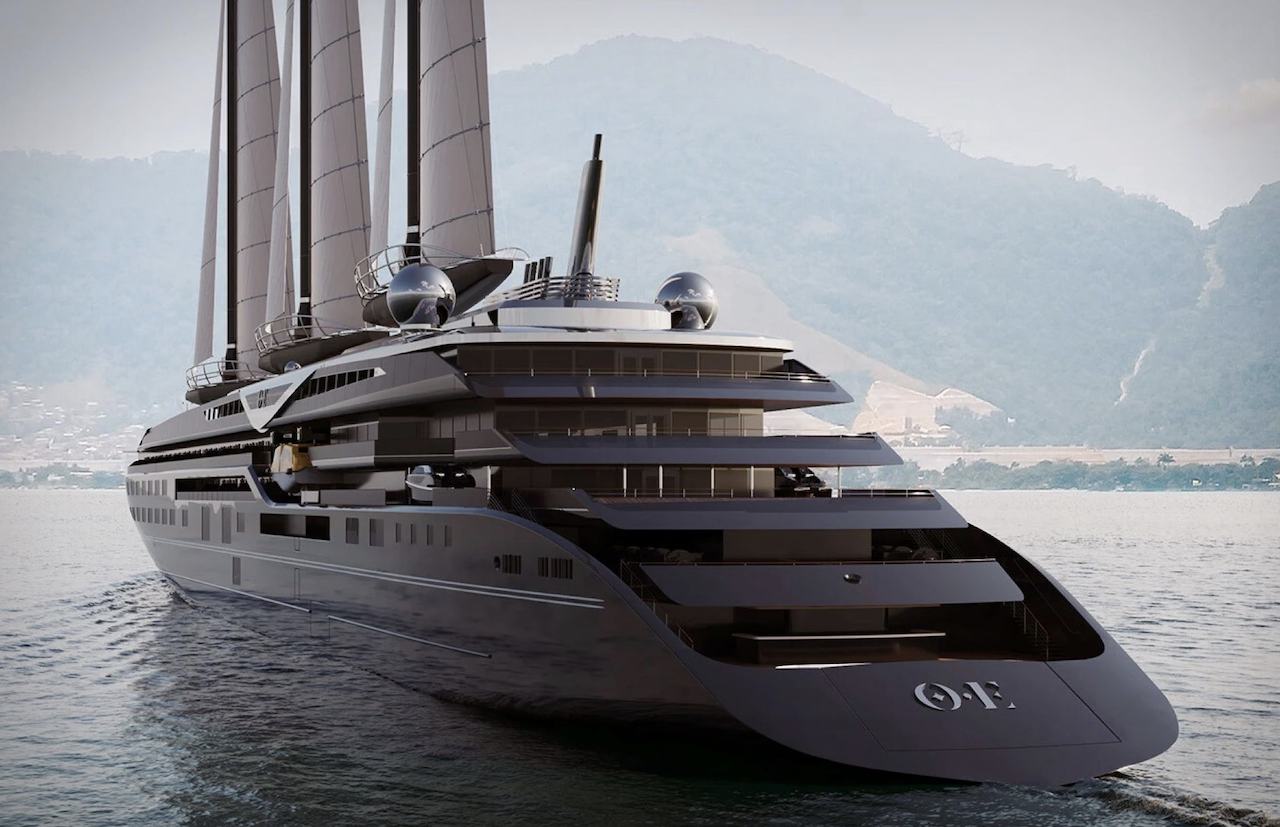
And, of course, Explora Journeys has been a pioneer in this space. Explora is one of my travel agency’s largest vendors and I can attest to the growth of the space and the brand. Unlike Ritz (sub 500 passengers) and the smaller Four Seasons, Aman, and Orient Express products, Explora hosts up to 900 passengers on each of their first two ships. But that’s intentionally below capacity and features a crew of 700. However, Explora launched with a more realistic target of 80% being a target, and fully accepting that it’s near impossible to completely price the vessel and itinerary and suites for a sell-out. From access to the tools we have, it’s selling better than the 50% Ritz is posting and consistently at a more approachable price point.
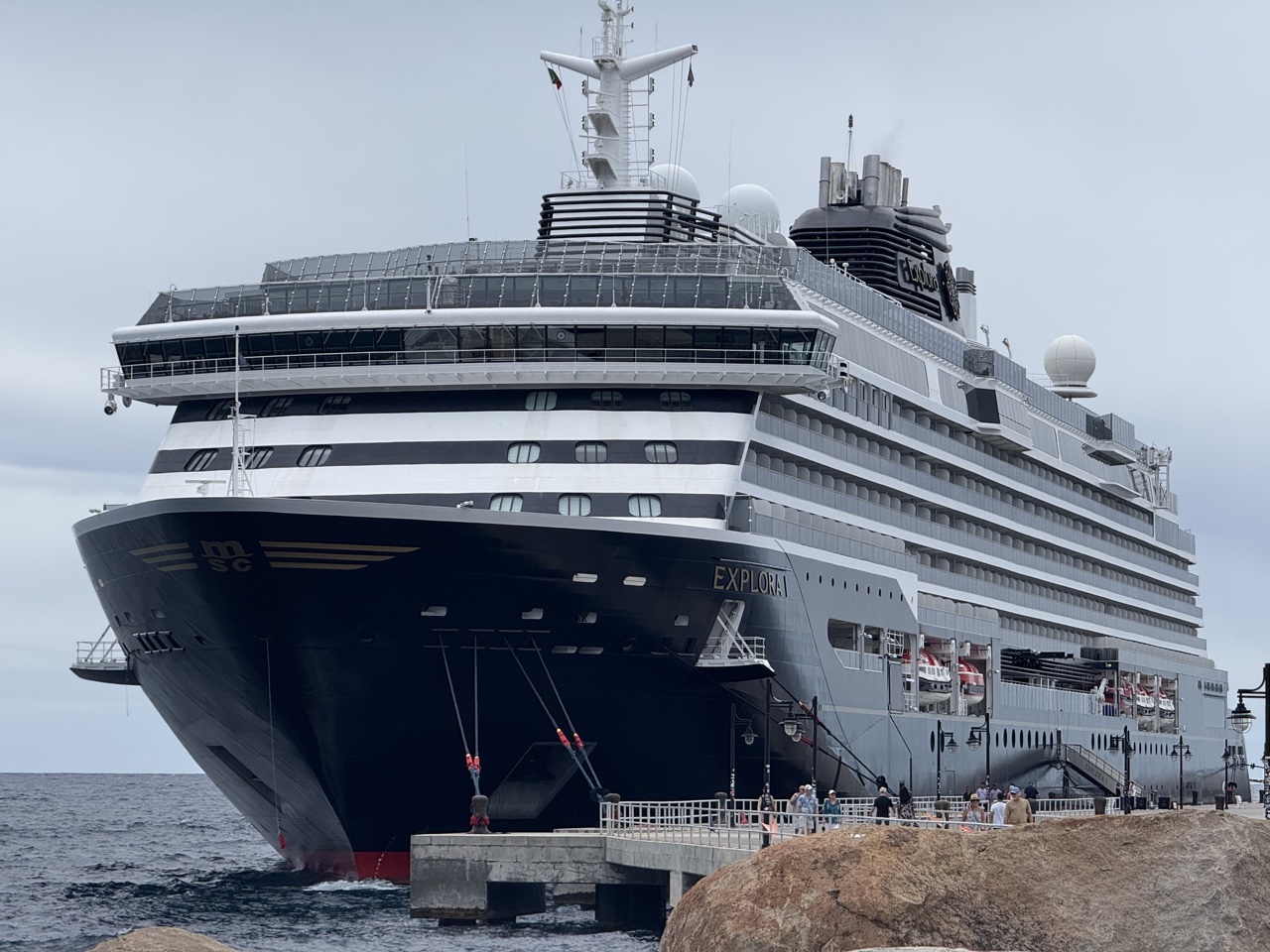
Opportunity Is There, Realism Should Follow
The question Lucky at OMAAT asks is a reasonable one: is there a market for luxury travelers that moves them from hotels to sea or complements their hotel experiences? Explora Journeys has proven that to be the case but these brands are building a new category.
The W Hotel proved out a different concept in the 1990s and 2000s answering the question: is there space for a sassy, fun brand in the premium/luxury market?
Airlines added business class, then premium economy, then first class evolved into private rooms and in some cases combinable suites, and single aisle aircraft now capable of long haul flights allow carriers like JetBlue to enter markets they couldn’t have before. Travel is an evolution and assuming the markets are static is a fallacy. If anything, segmentation has proven in the last two decades that there are more and more categories and segments than we thought possible.
This market is most certainly there, and Ritz-Carlton has a 200 million Bonvoy member marketing head start. But building a new market segment is hard to do, even with the prestige of a brand like Ritz. Oaktree’s initial exuberance for a differentiated product with a great marketing partnership shouldn’t simply be tempered back to when it will achieve 85-90% occupancy but rather what a reasonable occupancy should be for the product. If the best luxury hotels struggle to break 78% with fewer challenges, lower entry points, and an established market and position, I fear Oaktree’s bond holders will continue to see “struggles” long past 2027.
But Also Pricing
An analyst from Oaktree might ask “what makes you qualified to criticize our forecasts?” Simple. Look at the till. Customers aren’t performing to expectations but they are for the luxury hotel segment and other entities in the space. One key reason is that Ritz-Carlton Yacht Collection prices between 200% and 300% of competitors in the market. Departures this month (July 2025) in an entry-level suite sell for $11,600/pp based on double occupancy on Ritz-Carlton Yacht Collection – that’s more than $23,000 per suite. Seabourn is as low as $2,800/pp, Silversea is offering caviar service too from $7,920/pp this month, Explora Journeys is in the same range for most of July but drops to just $4,725 for seven nights at the end of the month.

For those looking to use a stockpile of Bonvoy points, you’ll need seven to eight digits in your account. Bonvoy members can use 180,000 points to secure a $1,000 discount on their cruise fare with Ritz-Carlton. For this particular comp, a suite would require a cool 4.176MM Bonvoy points. Capital One Venture card holders could in theory nearly halve that amount buying through their portal (2.32MM Venture points) or Chase Sapphire Reserve members could get onboard for 1.546MM points. Compare that last one to the outright bargain at Explora Journeys and a pair can get a comparable experience for as low as 630,000 Chase Ultimate Rewards points or less than 1MM American Express Membership Rewards points.
The market is there, it’s performing, and it will grow. Oaktree and the broader Ritz-Carlton Yacht Collection brand should revise expectations and pricing, and soldier on.



Interesting counterpoint to Ben’s views. Even going back to my youthful travel agent days seeing Windstar launch as the first (I believe) to try this market niche around 35 years ago it’s been an interesting experience. The cruise lines have perpetually crowed about the untapped market of U.S. and foreign passengers who just need to try a cruise to love one. Likewise the luxury segment has, as you noted, been moving in the same direction.
Nonetheless I’m not sold that we haven’t reach a near-saturation point for larger ships. There’s been a great deal of pushback by places that get a lot of crowds that pour in like the Mongol Horde, clogging streets, often acting oafishly, and generally being a nuisance to residents and tourists staying nearby while vanishing by night. How much more can Barcelona or Venice really take? I do think the small ship concept has a huge advantage by comparison because these ships don’t need giant facilities to offload 6,000 people in a couple of hours and can therefore dock at less overrun destinations. The problem is that the economics of small ships exclude many people who travel on cruise liners due to the high price. One things for sure though: However it turns out, it will sure be interesting to watch.
Separately, my family took a Silversea trip last year with my parents. My parents had taken Silversea a few times before covid and thought it was great. This was my first time being on a cruise and I had high expectations based on the reputation. While the places we visited were great and the cabin comfortable, overall it was kind of disappointing. Food was bad, service was so so, and it just felt hurried. Lots of people said “it’s gone downhill since Royal Caribbean bought it”. Never again n
What did your parents think of old vs. new Silversea?
Sorry if i wasnt clearer. They also noticed the changes and were not thrilled. We dont plan to go on Silversea again.
Even though this was my first ocean cruise, we had as a family been on a Tauck river cruise in 2022. We all agreed that that was much better, and we are returning to cruise on another Tauck river cruise in 2026.
In agreement with Christian though I might add from an economic point of view the price point that Marriott is trying to “sell” is extremely high versus some of the mainline cruise companies. As a Lifetime Titanium with over 4300 room night Marriott’s marketing department solicited me and in the beginning I was intrigued as we were planning another Med cruise. Once you peeled the onion back you have ask yourself is it worth it? Adding that Marriott is not the same preferring to default to its franchisees.
Not sure of it’s future and wouldn’t bet on it.
Reality is that this is appealing for a very tiny, tiny sliver of the luxury market (and TrekTrendy I guess). And I don’t think Ritz-Carlton has the reputation it once enjoyed, if anything the existence of these ships may help elevate some of their more tired properties.
If you have the ~$25k to spend, why not just rent a catamaran and hire a captain to take you around “wherever” for the week? Caviar and champagne can be provisioned if needed, they seem to sell both in retail stores.
THIS guy gets it!
I am not a cruise guy – never been on one. But luxury hotels, and occasionally even ultra-luxury, are a regular part of my travel. The RC was the first time I thought of looking at a cruise.
Once I started down the road, we ended up not booking one at all, but if we did, it wouldn’t be RC. I travel with two other adults, so that means two state rooms. RC offers no single supplement and has only 2 adjoining options (or did), and the configuration is nearly impossible to secure. But the biggest issue was the pricing. I’d pay more if RC was offering something that much better than other luxury lines – but there is no evidence at all that this is true. The absolute rates with no flexibility and the availability of considerations from other lines means that RC is out. And, frankly, reviews on the RC line are very mixed.